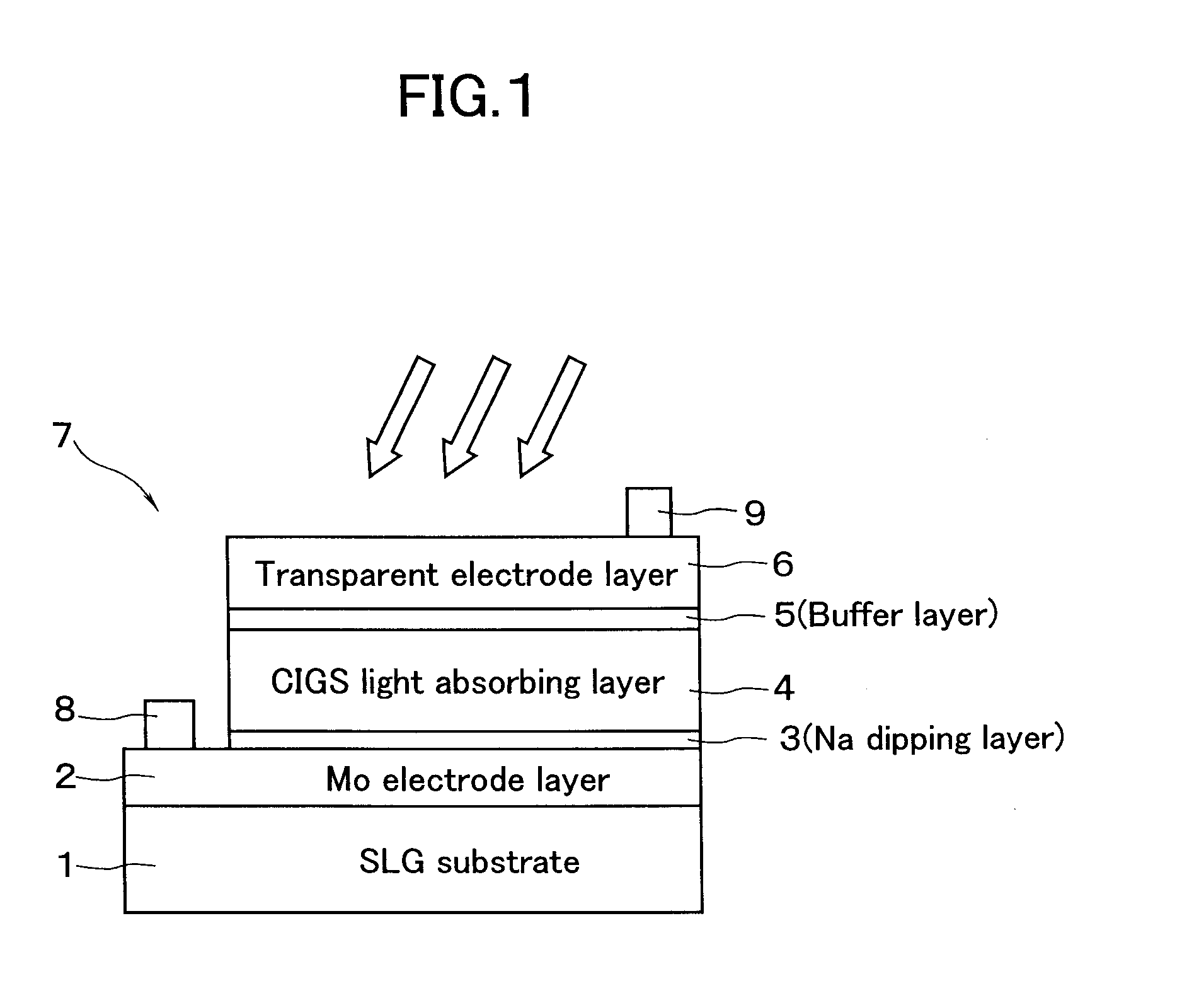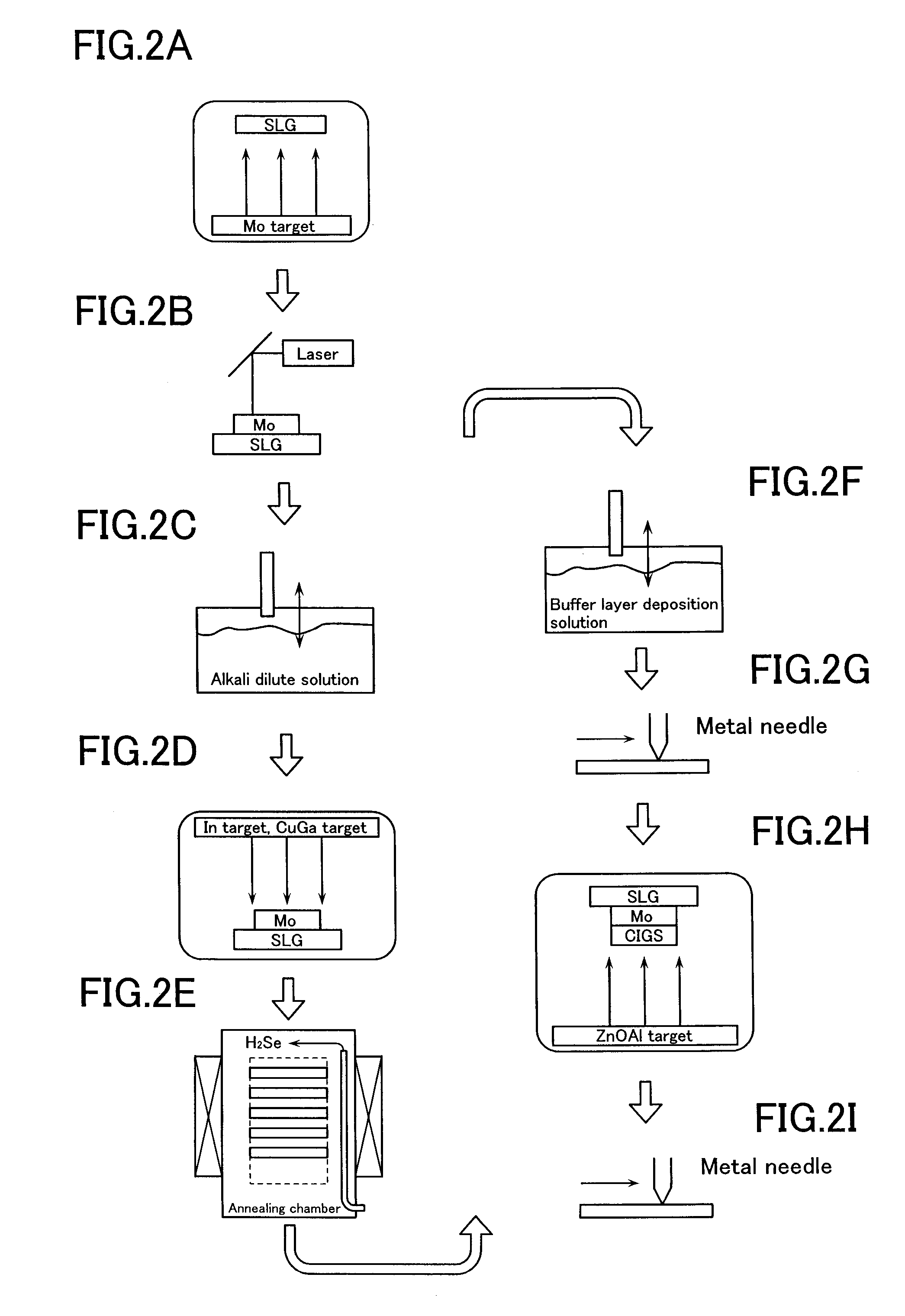Process for Producing Light Absorbing Layer for Chalcopyrite Type Thin-Film Solar Cell
a technology of chalcopyrite and light absorbing layer, which is applied in the direction of climate sustainability, final product manufacturing, basic electric elements, etc., can solve the problems of poor adhesion between the light absorbing layer and the electrode layer, difficult to achieve the desired single cigs layer, and poor adhesion between the mo electrode layer and metal ga interface, etc., to achieve positive the effect of photoelectric conversion
- Summary
- Abstract
- Description
- Claims
- Application Information
AI Technical Summary
Benefits of technology
Problems solved by technology
Method used
Image
Examples
example 1
[0051] When the light absorbing layer 4 (FIG. 1) is produced, the predetermined number of glass substrates 1c are accommodated in the heat treatment chamber 40 shown in FIG. 4. The In metal layer and the Cu—Ga alloy layer have been superimposed on the substrate 1c by using the inline sputter deposition device 38 (FIG. 3). Then, selenization is performed according to a temperature profile shown in FIG. 5.
[0052] In other words, the interior of the process tube 46 is heated by the heaters 41 so as to range from room temperature to 250° C., more preferably to range from 30° to 150° C. In a state in which the interior of the process tube 46 is kept at a predetermined temperature within this range, hydrogen selenide (H2Se) gas is introduced from the nozzle holes 48 of the gas inlet tube 47 with a predetermined flow rate for time t1 while keeping the interior of the process tube 46 at a reduced pressure of 50 to 95 kPa in response to the operation of the evacuating mechanism. The above fi...
example 2
[0059] As in Example 1, the glass substrates 1c on which the In metal layer and the Cu—Ga alloy layer are superimposed are accommodated in the heat treatment chamber 40. Then, selenization is performed according to a temperature profile shown in FIG. 6. The temperature profile of this example is different from that of FIG. 5 in that H2Se gas is supplied with relatively a low flow rate immediately after the first selenization step and the H2Se gas is continuously supplied without interruption in the second selenization step after the temperature increases to 250° to 450° C. In FIG. 6, time t5 represents the second selenization step including heating-up time immediately after the first selenization step.
[0060] In the second selenization step having longer Se extraction time, the flow rate of continuously supplied H2Se gas per unit time is set lower than that of the second selenization step of Example 1. In this second selenization step, Se components can be extracted into the light a...
PUM
 Login to View More
Login to View More Abstract
Description
Claims
Application Information
 Login to View More
Login to View More - R&D
- Intellectual Property
- Life Sciences
- Materials
- Tech Scout
- Unparalleled Data Quality
- Higher Quality Content
- 60% Fewer Hallucinations
Browse by: Latest US Patents, China's latest patents, Technical Efficacy Thesaurus, Application Domain, Technology Topic, Popular Technical Reports.
© 2025 PatSnap. All rights reserved.Legal|Privacy policy|Modern Slavery Act Transparency Statement|Sitemap|About US| Contact US: help@patsnap.com



